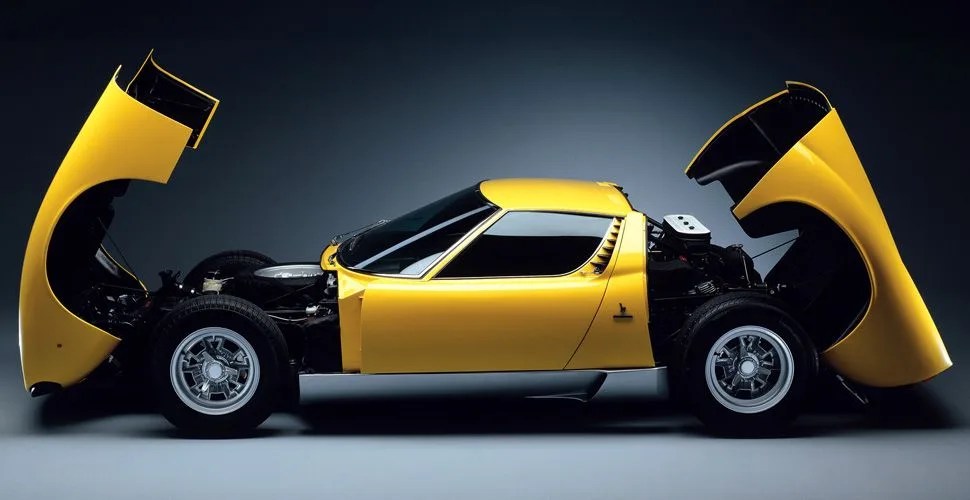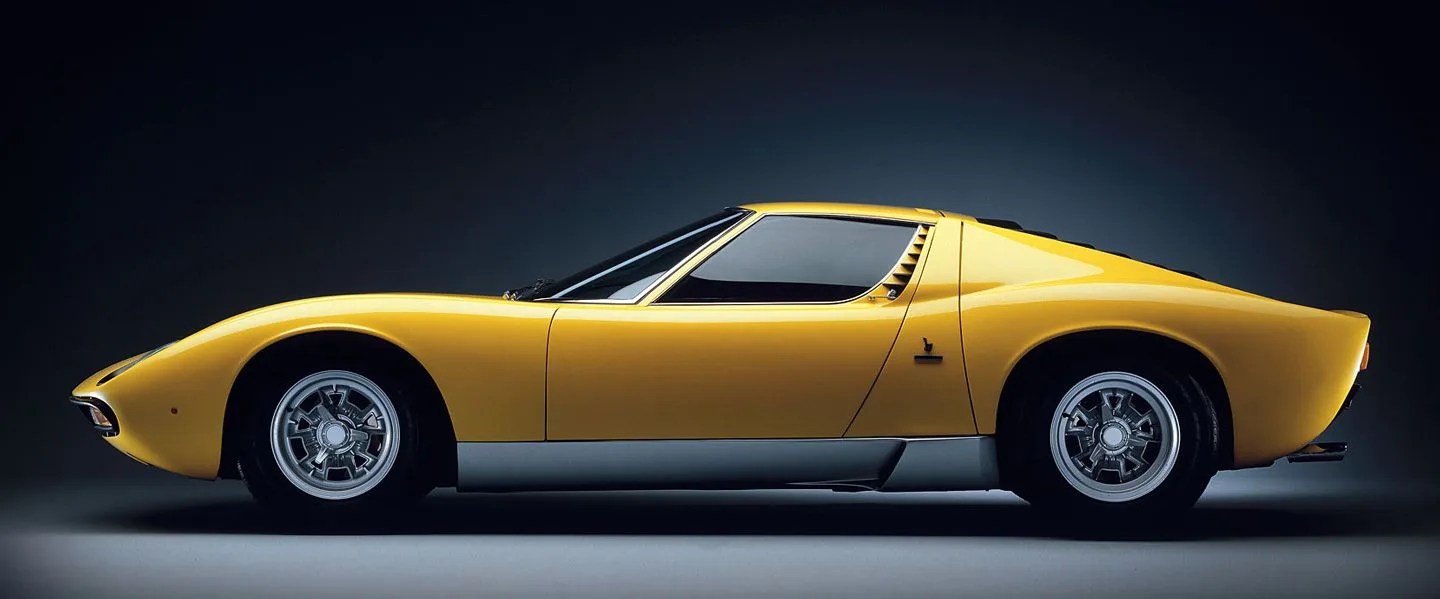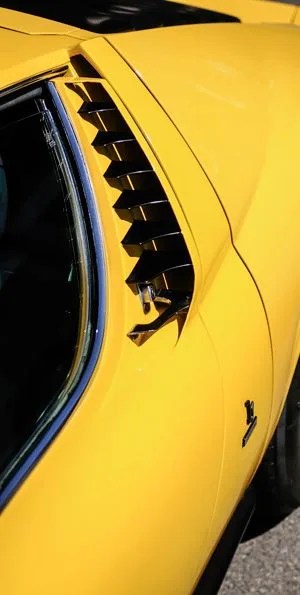In the pantheon of automotive design, there exist but a few gods whose thrones will likely never be usurped (the Porsche 911, Ferrari GTO, Jaguar E-Type, Aston Martin DB5). The Lamborghini Miura surely occupies one of those glorious gilded chairs, and all others less lustrous in the wake of the Miura’s sheer beauty. Long, low and achingly gorgeous, the Miura bowed at the 1966 Geneva Auto Show to a tsunami of adoration from the automotive world. It marked the V12 beginnings of the Lamborghini supercar whose legacy lives to
this day in the monstrous Aventador.
What It’s All About
Legend has it that a handful of engineers from Lamborghini embarked on a skunkworks project in their spare time (as if working for Lamborghini wasn’t enough). The P400, as it was known (P for ‘posteriore’ and 400 for ‘4 litri’, signifying engine position and displacement). Engineers Gian Paolo Dallara, Paolo Stanzani, and Bob Wallace (which one of these is not like the others?) contributed their various skills to develop this mid-engined, racing-inspired sports car that would
go against the tide of Lamborghini’s grand touring car ambitions, realized by the likes of the 350GT and the 400GT. Legend has it that Lambo founder Ferrucio Lamborghini would have none of it. Lambo was not going to try to be another Ferrari, by God.
Eventually, the three men convinced the old man to get on board. Ferrucio rationalized that the P400 would be a design exercise for marketing purposes, but that mindset was enough to downshift and punch the gas on the P400 project. The chassis design had


